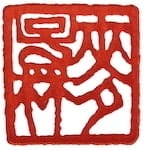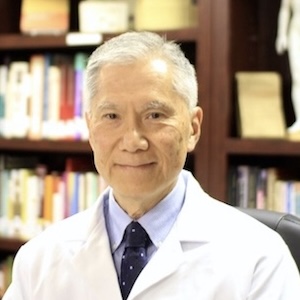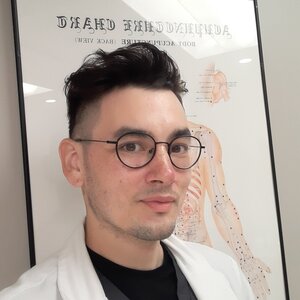Hello Sanghoon,
Thanks again for a thoughtful presentation, and I especially appreciated the portion where you went through each meridian.
I have a question about using tonifying the Lg Intestine to treat constipation.
If someone has dry stools, and if they are already on the thin side, thus more of a Yang Ming constitution, won't tonifying the Lg Intestine create more dryness in the body, and thus make the constipation worse? In this case I'd think more of boosting up the Spleen to moisten, or maybe the Lung to boost moisture in the Metal phase.
Could you help me to better understand your thinking around using the tonifying Lg Intestine treatment for constipation.
Thanks, and looking forward to your new book!
On a related note . . . on page 28 of the book . . . 'Inner Dampness' is associated with 'Spleen Deficiency' and the prescribed treatment includes SP2+, HT8+ LIV1-, SP1- . . . and we have been taught with 'Inner Dampness' (as distinct from 'Outer Dampness') to, with all other aspects of the case considered of course . . . to supplement Large Intestine . . . so I find this fascinating (again, leading me to suspect this is an 'advanced' manual for cases beyond the foundational strategies . . but without rationales or explanations) . . .
Hello Dr. Max,
Good question!
When I introduced constipation as a possible indication of large intestine tonification, my intention was to explain that if the basic function of the large intestine is weak and has low motility, it can be beneficial to tonify the large intestine meridian to strengthen its function. This approach is based on the principles of the five elements and their related organs and meridians, rather than the six qi.
I agree with your idea if constipation occurs in a patient with a thin and dry constitution, it would be preferable to apply meridians that can provide moisture such as tonifying the spleen or lung meridian from a six qi perspective.
In Saam Acupuncture, it is crucial to think beyond the one-sided approach of prescribing specific formulas for specific symptoms. Instead, it is important to analyze the situation using a 3D coordinate system I recommended to determine which factor is the stronger cause and which meridian should be the priority target.
Thank you.
Sanghoon
------------------------------------------------
Hello Sanghoon,
Thanks again for a thoughtful presentation, and I especially appreciated the portion where you went through each meridian.
I have a question about using tonifying the Lg Intestine to treat constipation.
If someone has dry stools, and if they are already on the thin side, thus more of a Yang Ming constitution, won't tonifying the Lg Intestine create more dryness in the body, and thus make the constipation worse? In this case I'd think more of boosting up the Spleen to moisten, or maybe the Lung to boost moisture in the Metal phase.
Could you help me to better understand your thinking around using the tonifying Lg Intestine treatment for constipation.
Thanks, and looking forward to your new book!
Good question! I understand your approach from the six qi perspective.
In the clinical application of Saam Acupuncture, while the six energy aspects are important, the meridian pathways and the intrinsic functions of the organs are also significant. I would like to explain why we can apply tonifying spleen meridian for internal dampness situation for the following reasons:
The Spleen plays a crucial role in the management of fluids and dampness in the body. Here are the key functions related to fluid and dampness.
- Transformation and Transportation: The Spleen is responsible for transforming and transporting food essences (nutrition), Qi, and body fluids.
- Dampness Management: When the Spleen's ability to process fluids is impaired, dampness or phlegm can accumulate, leading to symptoms such as edema.
- Water Metabolism: The Spleen assists in the body's water metabolism by distributing water extracted from food throughout the body.
- Impact of Spleen Dysfunction: When the Spleen is weak or its Qi is deficient, it can lead to improper fluid transformation, resulting in the accumulation of dampness. This can manifest as symptoms like bloating, edema, and phlegm.
As above, when interpreting Saam Acupuncture prescriptions, it is important to consider several aspects. My approach is basically three-dimensional.
I hope this helps. Thank you.
Sanghoon
@shlee777khu-ac-kr Hello Sanghoon
Thanks for the thoughtful reply.
Yes, of course, we need to look at the entire presentation of the patient. Your 3D model makes a lot of sense to me. I already mostly think in those ways, but seeing you draw it out that way was helpful.
I'm thinking for this one patient who is thin, but also has poor motility. I could tonify the LU to increase fluids in the interior on one side (six qi dampness), and then tonify LI on the other, so as to improve the function of the LI (five phase organ function).
This is also the tradition interior/exterior relationship of this organs, but I'm using to Saam thinking and 4 needle dynamics to address the situation.
Does this thinking make sense to you?
Thank you for your comment, Michael.
There are various opinions on treating multiple target organs simultaneously, and specific methods may differ among practitioners, as outlined below:
- First, apply the initial acupuncture prescription to one side, remove the needles after a period of retention, and then apply the second prescription to the same side.
- Apply different acupuncture prescriptions to both sides simultaneously.
However, I do not prefer using multiple prescriptions concurrently. Just as it's challenging to determine which components of mixed herbal medicine prescriptions produce good or bad results when used simultaneously, it's equally difficult to identify which acupuncture prescription causes beneficial outcomes or side effects when using multiple acupuncture prescriptions simultaneously.
Another reason for this approach is that if both acupuncture prescriptions are correct, you can observe some effect by applying even just one of them. When that prescription becomes less effective after repeated treatments, using the second acupuncture prescription as an alternative for the remaining symptoms can provide a clear direction in each treatment principle. This method also enhances understanding of the causal relationship between the disease and each prescription.
The above describes my personal opinion, and I hope it proves helpful.
Thank you.
Sanghoon














































